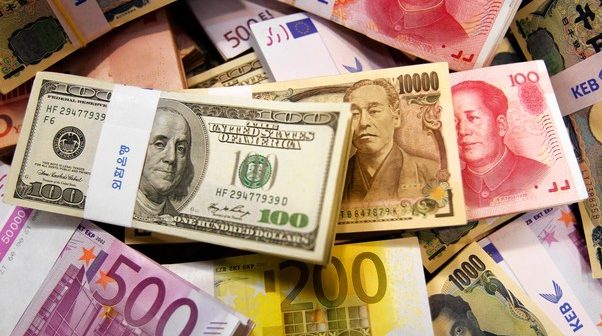As the Indian forex derivative market continues to evolve, the last few days since October 7, 2024, have provided key insights into emerging trends, currency pair movements, and strategic considerations for small and retail investors. Driven by a mixture of geopolitical factors, central bank policies, and global economic shifts, forex derivatives remain an essential tool for hedging and speculation. Below, we analyze the most recent trading activities and provide insights on the best currency pairings and strategies for small investors.
Key Developments in Forex Trading from October 7–10, 2024
- Volatile Market Movements: Between October 7 and 10, 2024, the Indian forex derivative market saw heightened volatility, particularly driven by ongoing global uncertainties. The INR has been impacted by fluctuations in oil prices, rising global inflationary pressures, and fluctuations in foreign capital inflows. This volatility has particularly affected the USD/INR and GBP/INR pairings, which saw sharp intraday movements across multiple sessions.
- USD/INR Pairing:
The USD/INR pair has witnessed substantial movement due to the hawkish stance adopted by the U.S. Federal Reserve, signaling the likelihood of further interest rate hikes. This has pushed the U.S. dollar to a position of relative strength, while the INR remains under pressure. Over the past few days, the INR has depreciated against the USD, which hit ₹84.60 per USD on October 9, 2024. This downward trend presents both risk and opportunity for retail investors, particularly in short-term derivative contracts such as futures and options. Investors looking to profit from the USD’s momentum should consider hedging positions in the medium term as the dollar continues to gain on strong U.S. economic indicators. - GBP/INR Pairing:
The GBP has faced its own headwinds, primarily due to uncertainties around the Bank of England’s (BoE) interest rate policy and the economic slowdown in the UK. Despite this, GBP/INR remains a crucial pairing for Indian forex traders. On October 8, 2024, the GBP/INR reached ₹103.20, with slight depreciation seen due to UK economic data reflecting a sluggish recovery post-Brexit. For small and retail investors, opportunities exist in short-term speculative trades, especially in derivatives markets where options strategies, such as straddles, can help manage the risks associated with currency volatility. - EUR/USD Cross Pair:
For Indian retail investors interested in non-INR pairings, the EUR/USD cross is another crucial pair to monitor. Since October 7, the EUR has struggled against the USD due to persistent economic weakness across the Eurozone. On October 9, 2024, the EUR/USD fell below $1.05, hitting $1.048, largely attributed to weak German industrial output data and a dovish stance by the European Central Bank (ECB). This cross-currency pairing offers a highly liquid option for small investors, particularly those looking to diversify their portfolios. However, caution is advised due to the unpredictability of economic recovery in Europe. - JPY/INR Pairing:
The JPY/INR saw an uptick in volatility due to the Bank of Japan’s stance on maintaining low-interest rates amidst rising global inflation. The yen remains relatively weak, trading at ₹0.56 per yen on October 10, 2024. This pairing might appeal to retail investors seeking short-term trades, particularly through futures contracts, given that the BoJ’s continued dovish policies make it unlikely that the yen will gain strength soon.
Best Currency Pairings for Retail Investors
For small and retail investors, some of the top currency pairings to consider in the current market environment include:
- USD/INR: The dollar’s continued strength offers ample opportunities for both short-term and medium-term trades. Leverage small lot sizes for options trading to mitigate risks.
- GBP/INR: Given the volatility in the British pound, retail investors could employ options strategies such as covered calls or strangles to capitalize on price swings without committing large amounts of capital.
- EUR/USD: This cross-pair remains highly liquid and is ideal for those looking to diversify beyond INR pairings. A short position might be prudent if the ECB continues its dovish stance.
- JPY/INR: The weak yen presents opportunities for short-term gains, especially through derivatives like futures or swaps.
Strategic Insights for Retail Investors
- Volatility as Opportunity:
While high volatility can deter many small investors, it also presents significant opportunities for those willing to engage in short-term speculative trades. Small investors can capitalize on such opportunities through options and futures, managing risk with stop-loss orders and hedging strategies. - Risk Management:
For retail investors, managing risk is critical, especially in a volatile forex market. Tools like stop-loss orders, position sizing, and risk-reward ratios can help protect capital. Given the unpredictability of forex movements, it’s advisable to maintain a conservative approach to leverage and avoid overexposure to any single currency. - Diversification and Currency Correlation:
Investors should consider diversification by engaging in multiple currency pairs and understanding the correlation between them. For instance, the USD/INR and EUR/USD pairs often move inversely due to economic dynamics in the U.S. and Europe. Hedging strategies that account for such correlations can reduce portfolio risk. - Stay Updated with Global Trends:
Forex movements are closely tied to global macroeconomic trends, including interest rate decisions, inflation data, and geopolitical events. Retail investors should stay informed about major announcements, such as central bank policy changes, to make timely trading decisions.
Conclusion
Since October 7, 2024, forex derivative markets in India have exhibited notable trends, especially in the USD/INR and GBP/INR pairings. Small and retail investors can leverage short-term volatility while employing strategic risk management techniques. By focusing on key currency pairs and keeping a close watch on global economic developments, investors can navigate the forex market effectively in the current environment.





